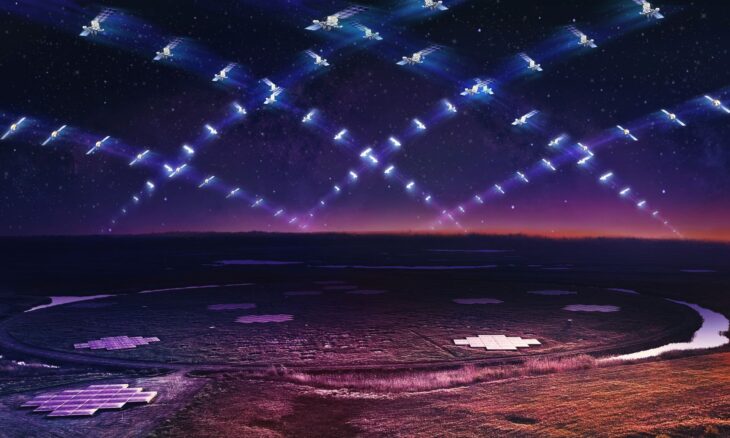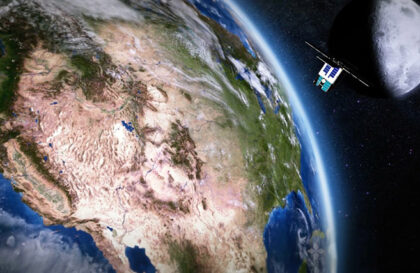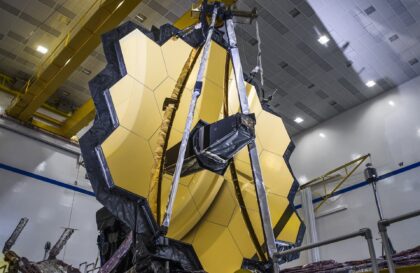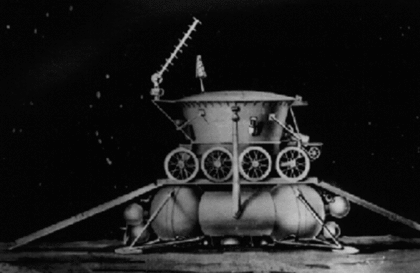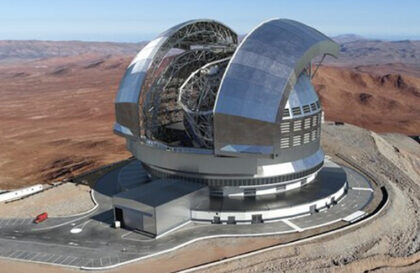According to official data from SpaceX, over two years, more than 26 thousand maneuvers of Starlink satellites were performed to avoid collisions. This means nearly 4,000 Starlink satellites achieved an average of six such tricks per year.
But the current lineup of Starlink satellites is only a fraction of what SpaceX plans to put in orbit. Over the next decade, the number of these satellites could reach 42,000. Added to this are OneWeb’s plans to launch up to 4,000 satellites, 3,200 satellites from Amazon Kuiper, and potentially 13,000 from China’s Guowang system.
The situation in near-Earth space promises to become like a highway. While SpaceX claims that each satellite has fuel for 350 collision avoidance maneuvers over its five-year life (an average of 70 tricks per year), experts suggest that this amount could be depleted much sooner.
The number of conjunction events increases when two objects in space (debris, debris, satellite) come dangerously close to each other. Predicted events for 2022 were 134% higher than 2020 and 58% higher than 2021, exceeding 4 million.
Will we really have to use traffic lights in orbit?
Experts foresee a future with stricter satellite rules, including limits on the number of satellites in different orbits and a ban on elliptical orbits. They also note growing support for a ban on anti-satellite weapons and propose penalties for creating space debris. These measures can encourage producers to be more responsible.
There are already examples of increased regulation of outer space: slots in geostationary orbit (about 22,000 miles (36,000 km) above Earth) are allocated through the International Telecommunication Union. In contrast, licenses for lower orbits are issued by national authorities without international coordination. Experts suggest that as available resources decrease, government control will increase.
Experts also insist on developing methods for eliminating dangerous space debris. While the economic benefits of this are unclear, sentiment is changing. The United States has already published a plan to combat orbital debris, heralding changes in the management of near-Earth space. The current state of affairs is unlikely to continue.
But satellites are only part of the question, the more accessible part. The near-Earth space is cluttered not only with satellites but also with a mass of space debris. According to the European Space Agency, there are approximately 36,500 pieces of space debris larger than 4 inches (10 centimeters), about a million objects measuring 0.4 to 4 inches (1 to 10 cm), and 130 million things more minor than 0.4 inches. (1 cm).
Collisions between them create new fragments, making the problem worse. While large objects are tracked. For example, the US military is tracking the movements of more than 20 thousand large objects classified as space debris.
However, small ones pose an unexpected collision threat.
The US Space Force launched the Orbital Prime project in 2021 to clean up space debris and invited the private sector to participate. The program provides for developing and testing a waste removal system for 2-4 years. The winner of the competition will receive funding: $250 thousand for the initial stage and $1.5 million for creating and testing the system.
While no “traffic lights” are in orbit, what should we do?
The first thing to know is that not all orbits are equally at risk of contamination. For example, Starlink satellites are in a relatively low orbit, 342 miles (550 kilometers) above Earth, where atmospheric drag naturally clears away debris over time. Objects are slowed down by atmospheric resistance and burn up in the atmosphere as they fall. However, this mechanism is ineffective at high altitudes, such as those at which the OneWeb and Globalstar satellites are located above 600 miles (1,000 kilometers).
Experts look at space as a system with ascending and descending currents. People control the upward currents. The atmosphere controls the downward ones. However, due to atmospheric drag, natural orbital cleaning only works at low altitudes.
Many operators of prominent constellations promise to conserve fuel to send satellites down to altitudes where the atmosphere will destroy them. However, technical failures remain a real threat, as demonstrated by the failed descent of the European Space Agency’s 8.8-tonne Envisat satellite.
Banner image: Daniëlle Futselaar/IAU
Image credit:
https://www.astronomy.com
https://www.thestar.com
https://spacewerx.us
